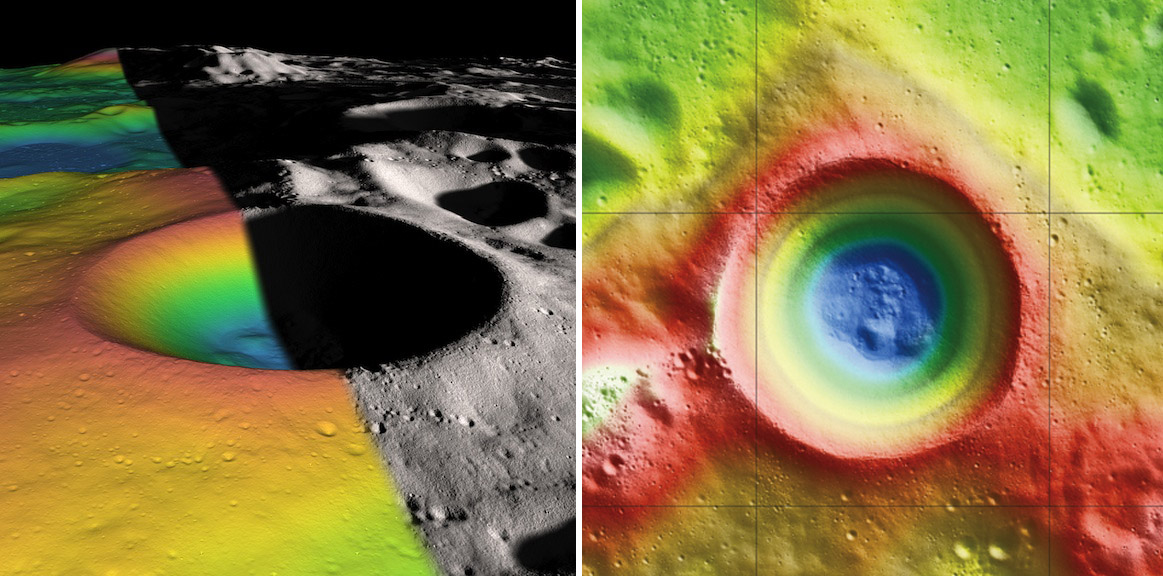May 14, 2022
Hyping the Wrong Interpretation
Originally published June 21, 2012

topographic images credited to NASA/Zuber, M.T. et al., Nature, 2012
There is some water near the Moon's poles. LCROSS detected a bucket full, and the Mini-RF radar
of Chandrayaan-1 probably saw more than that. But there is no convincing evidence that the LRO
altimetry data (LOLA) discovered any at all, but that isn't the way the story is being told. In the
current issue of Nature, Maria Zuber and colleagues report that the floor of Shackleton, a 21 km
wide crater whose rim - one part - marks the South Pole, is brighter (at laser wavelengths) than other
nearby crater floors. That could be due to it having about 22% water ice content. But the walls of
Shackleton are even brighter, including the parts occasionally illuminated by grazing sunlight. The
illuminated parts can not retain water ice so the Zuber team propose that it is bright, just as tens of
thousands of other crater walls are, because downslope movement constantly removes material darkened by space weathering to expose fresh, unweathered soil. That is quite likely. Could there be two
explanations for brightness - the walls have an accepted, physically likely, if not certain, process at
work, and the floor brightness is due to a hoped for but mostly undocumented deposit of water ice?
It is possible, but I think unlikely. The Nature authors suggest that the most likely explanation is that
the deep hole of a crater at a lunar pole protects the floor from space weathering, keeping it anomalously bright. Or deposition from comet impacts could create a micron thick water/ice layer. But the
downslope movement of wall debris must have coated the floor with more than a micron - the deepest
that LOLA penetrates - of rock dust. Water ice at the top surface of any crater floor is very unlikely.
But the NASA press release includes the word ice in its title and much of the story is about the
interpretation that the authors dismiss. No wonder all the news stories are that this is a discovery of
ice. With this much spinning of the evidence the hot air alone would melt any ice on the crater floor.
Chuck Wood
Technical Details
Colors show elevations - blue deep, orange and red high.
Related Links
Rükl plate 73
Yesterday's LPOD: A Little Volcanic Center
Tomorrow's LPOD: Hardly There
COMMENTS?
Register, Log in, and join in the comments.



